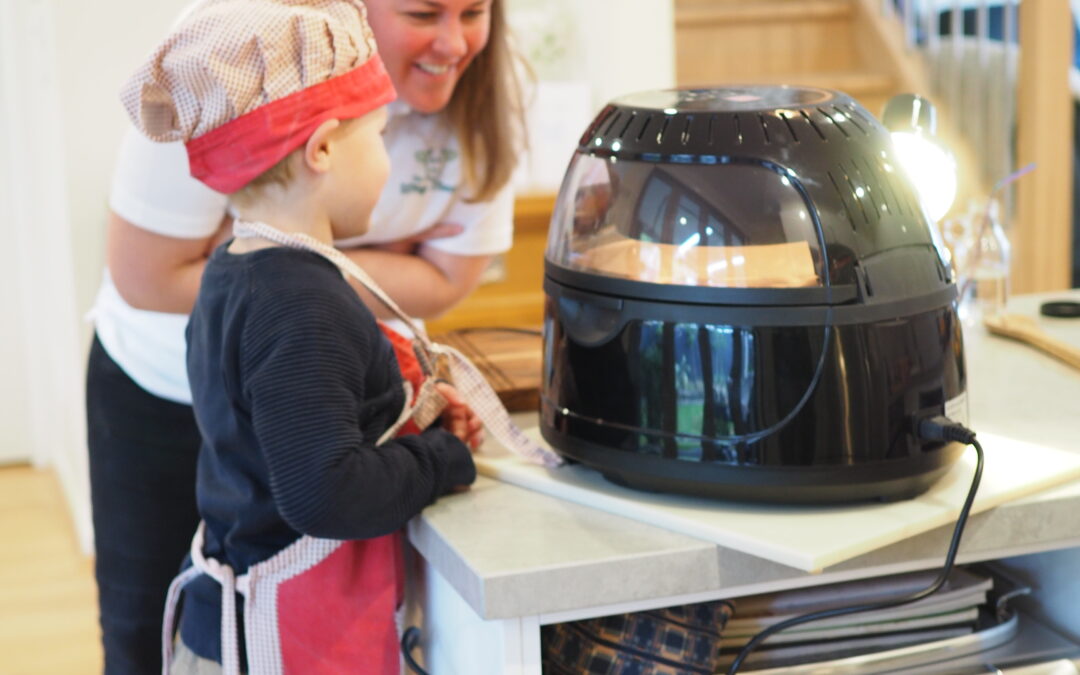Introduction
Have you ever wondered how your kitchen habits impact your energy bills? Power-saving cooking hacks can be a game changer. These clever tricks and tools not only help reduce those annoying power bills but also make your kitchen more environmentally friendly and sustainable.
It’s important to be aware of our energy usage. It’s not just about saving money; it’s about doing our part to create a sustainable future. Every little bit counts, right? By choosing energy-efficient appliances and smarter cooking methods, we can all contribute to a healthier planet.
Picture this: a kitchen filled with appliances that work smarter, not harder. Appliances designed to minimise energy consumption without sacrificing performance. From air fryers to slow cookers, there are countless options to explore.
Power-saving doesn’t have to be difficult. Simple changes like adjusting refrigerator temperatures or using pot lids can make a significant impact. Excited to discover some power-saving cooking hacks? Let’s jump right in!
Energy-Efficient Appliances for a Greener Kitchen
Kitchen appliances are notorious power hogs, but choosing energy-efficient models can make a significant difference. These appliances are designed to consume less electricity while delivering the same, if not better, performance.
Why Energy-Efficient Appliances?
- Lower Power Consumption: They use advanced technologies to operate more efficiently.
- Cost Savings: Reduced energy use translates directly to lower electricity bills.
- Environmental Impact: Decreased power usage means fewer greenhouse gas emissions.
The Magic of an Air Fryer
Take the air fryer, for example. This nifty gadget can be a game-changer:
- Power Usage Comparison:
- Conventional Oven: Uses about 2,400 watts per hour.
- Air Fryer: Only around 1,500 watts per hour.
That’s a substantial saving! Preparing crispy chips or roast veggies in an air fryer is quicker and uses less energy than heating up a large oven.
But are air fryers expensive to use?
- They are small-sized and pre-heat quickly
- They are easy to clean
- Quick cooking time
- Uses Less Oil
Cooking Times: Air Fryer versus Oven
| Frozen Food | Av time (Mins) Air Fryer | Av time (Mins) Oven |
| Nuggets | 10-12 | 25-30 |
| Crumbed Fillets | 14-16 | 35-40 |
| Crumbed Tenders | 14-16 | 35-40 |
| Fries/chips | 15 | 30 |
| Mini Potato Cakes | 10 | 25 |
| Pie | 15-16 | 30 |
| Sausage Rolls | 15 | 30 |
Other Energy-Saving Heroes
Consider these options too:
- Induction Cooktops: Heat faster and more efficiently than traditional electric stovetops.
- Pressure Cookers: Perfect for budget soups/stews in the winter months, they are super fast by utilising pressurised steam.
- Slow Cookers & Rice Cookers: Perfect for long cooking times with minimal energy use.
Switching to these appliances can transform your kitchen into an eco-friendly powerhouse, slashing your power bill while still creating mouth-watering meals.
By making these small changes in your cooking habits, you can achieve significant energy savings. Using gas efficiently not only reduces your bills but also contributes to creating a more sustainable kitchen environment.
The Connection Between Power Saving and Reducing Energy Bills
You don’t have to spend a fortune on energy bills just because you love cooking. By using power-saving techniques, you can significantly lower your monthly expenses.
Here are some energy-efficient habits that can make a big difference:
- Using energy-efficient appliances: Opting for models with an ENERGY STAR rating ensures you’re not only getting top performance but also saving on electricity costs.
- Adjusting refrigerator temperature: Setting your fridge to the optimal temperature (3°C for the fridge, -18°C for the freezer) can avoid unnecessary power consumption.
- Running full dishwasher loads: Fewer washes mean less water and energy used.
- Small appliances for big savings: Crock pots, rice cookers, and air fryers are fantastic alternatives to conventional ovens, using significantly less power.
Implementing these strategies doesn’t require a lot of effort but can lead to significant savings over time. Just imagine how much you could reduce your power bill by making simple changes in your daily routines!
Incorporating these hacks into your culinary routine means you’re not just cooking smarter but living more sustainably.
Sustainable Cooking Solutions
If you’re dealing with ever increasing power bills, it’s time to get creative with cooking methods that use less energy. Switching to alternative methods not only helps during times when power is expensive but also contributes to a healthier environment.
Electric Induction Stoves
Electric induction stoves are another excellent choice for efficient cooking. Unlike traditional gas burners that heat the air around the pot, induction stoves heat pots directly through magnetic induction.
Here’s why they’re worth considering:
- Super-efficient: Induction stoves transfer heat directly to the cookware, resulting in minimal energy wastage.
- Quick heating: They heat up faster than gas burners, which means less waiting time.
- Lower energy loss: Since the heat is concentrated on the pot, there’s less energy dissipation into the surrounding area.
- Cooler kitchen: Induction stoves generate less ambient heat compared to gas burners, keeping your kitchen more comfortable.
Pressure Cookers
Pressure cookers, whether electric or stovetop models, are fantastic tools for energy-saving cooking. By using steam pressure to cook food quickly, they reduce both the cooking time and the amount of energy needed.
Here’s why they’re great:
- Time and energy-efficient: Pressure cookers can significantly shorten the cooking time, saving you precious minutes in the kitchen.
- Versatile: You can use them for a wide range of dishes, from soups and stews to rice and beans.
- Gas and electricity-saving: With their ability to cook food faster, pressure cookers help minimise the consumption of both gas and electricity.
Pro Tip: Combine these methods with energy-efficient habits
To maximise your energy savings in the kitchen, try incorporating these habits along with the sustainable cooking solutions mentioned above:
- Use lids on pots: This simple practice helps trap heat inside the pot, reducing cooking time and energy usage.
- Precook ingredients in the microwave: If you’re using a stovetop or pressure cooker, consider pre-cooking certain ingredients in the microwave before transferring them to the stove. This can help speed up the cooking process and save energy.
Embracing these sustainable cooking solutions not only tackles the immediate challenge of gas shortages but also paves the way for a more eco-friendly kitchen routine.
Conclusion
Power-saving cooking hacks are not just about slashing energy bills. They play a crucial role in minimising our environmental footprint. By embracing these techniques, we make a significant impact on both our wallets and the planet.
Imagine the difference if each of us took one small step today:
- Switch to energy-efficient appliances. Whether it’s an air fryer or a crock pot, these devices consume less power and cook faster.
- Adopt gas-saving methods like using lids on pots to trap heat.
- Explore renewable solutions such as solar cookers.
The pending issue of gas shortages motivates us to find alternative cooking methods that consume less energy as a response to limited gas availability. This encourages us to explore sustainable alternatives. It’s time to take action.
Try incorporating at least one of these power-saving cooking hacks into your daily routine. Share your experiences with your local community. Together, we can encourage others towards sustainable living practices that also helps to eliminate the dreaded monthly or quartely bill shock.


